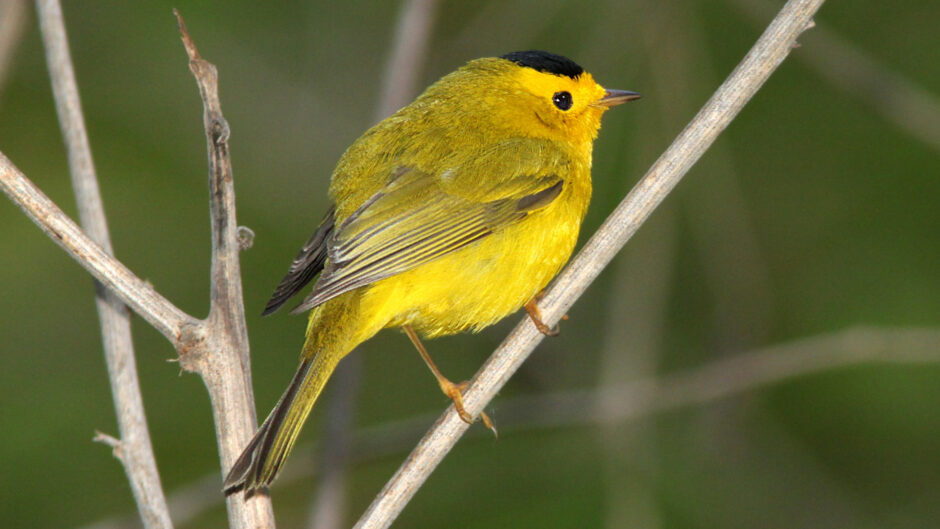
In 1969, in California, a researcher by the name of Robert Stewart sat by a nest of Wilson’s warblers and counted how many times the parents fed their chicks—primarily with caterpillars.
The average was 812 times per day.
Other studies have revealed similar figures. Caterpillars are immensely important to birds and to food webs in general. We can support these food webs in our gardens by growing the plants that host the most caterpillars (the larvae of moths and butterflies). Entomologist Doug Tallamy calls these high-performing plants “keystone plants.”
In the Pacific Northwest, our number-one keystone genus is Salix, the willows. According to the National Wildlife Federation, native willows support 312 moth and butterfly species here.
When I decided to make my garden more wildlife-friendly a few years ago, one of the first things I planted was a willow. I have dry, fast-draining soil and I’m a lazy waterer, so I went with a Scouler’s willow (Salix scouleriana). It’s an upland willow, which means it requires a lot less water than your typical willow. I couldn’t be happier with it.
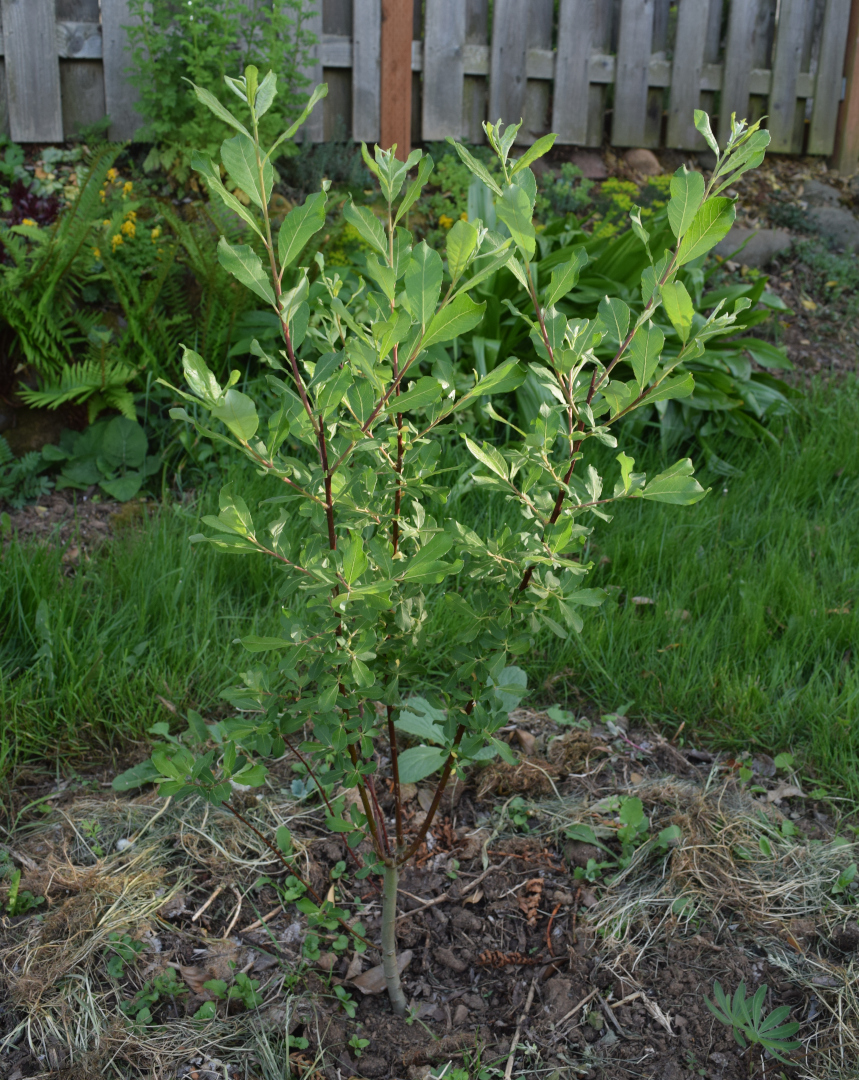
Despite receiving little irrigation beyond its first summer, my Scouler’s willow has been the fastest-growing thing I’ve ever planted. In 2021, I planted it as a thigh-high start from a one-gallon pot. After two years, it had shot up enough to cast a bit of shade for sitting under on a hot summer day.
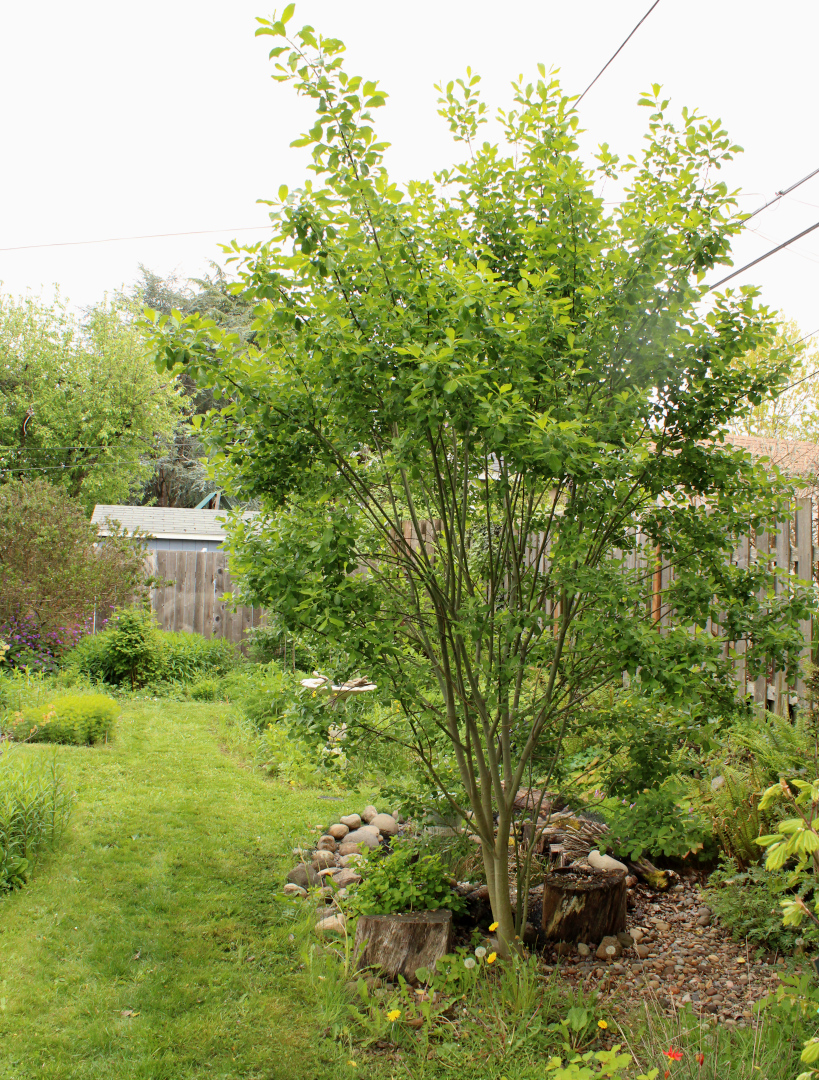
After only three years in the ground, it stands 15 feet tall.
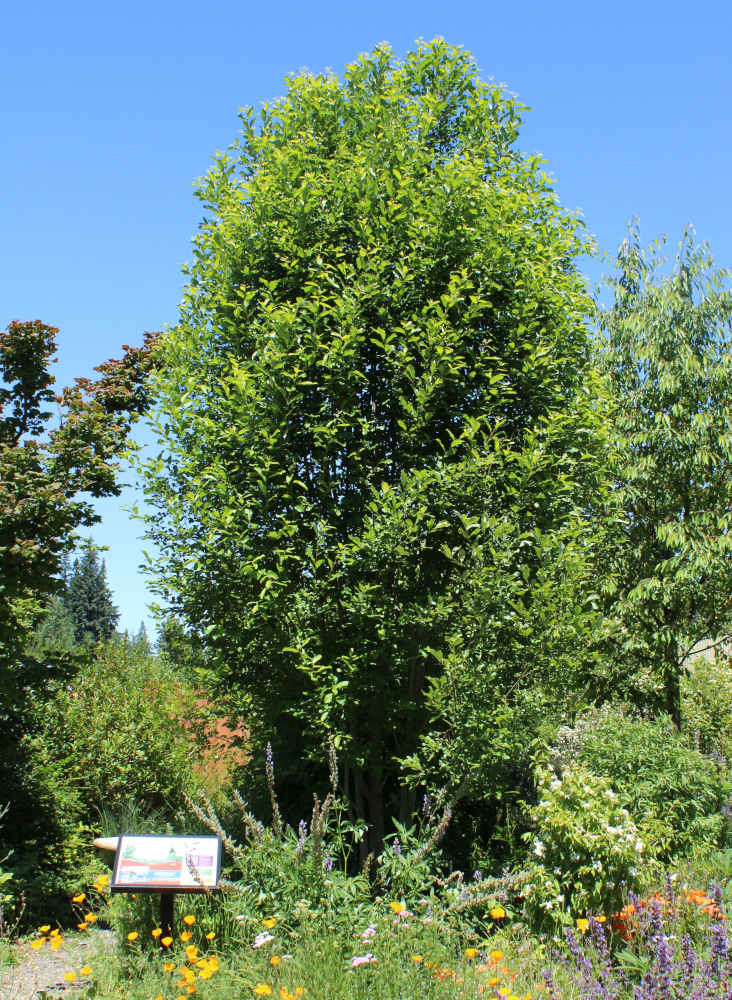
My tree should ultimately reach about 30 feet or even taller, but it’s a very upright grower—almost columnar—so it has a small footprint. It’s a great choice for a small, sunny urban garden like mine.
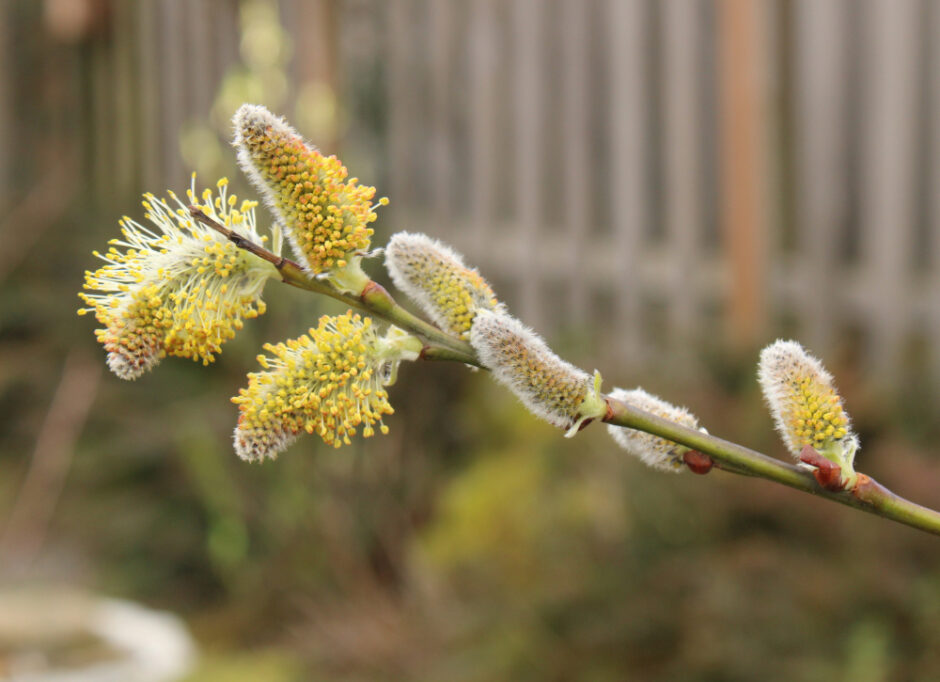
Willows are dioecious, which means each tree has either male or female flowers. Female flowers offer nectar, and male flowers offer both nectar and pollen. My tree bloomed for the first time in 2023, and I was happy to discover it was a male. I knew I’d have pollen for my pollinators.
When the kitten-soft, pussy willow flowers open in March, visitors include early-emerging bumble bees and mason bees. Also, a few mining bees (Andrena spp.) in Oregon are willow pollen specialists, so willow is an essential plant for them.
In general, though, flowers are a bonus with my Scouler’s willow. The main reason I wanted to grow it was for the caterpillars. In only its second year, the first species arrived, and I was there to witness it. I looked on as a western tiger swallowtail butterfly laid three eggs on my tree.
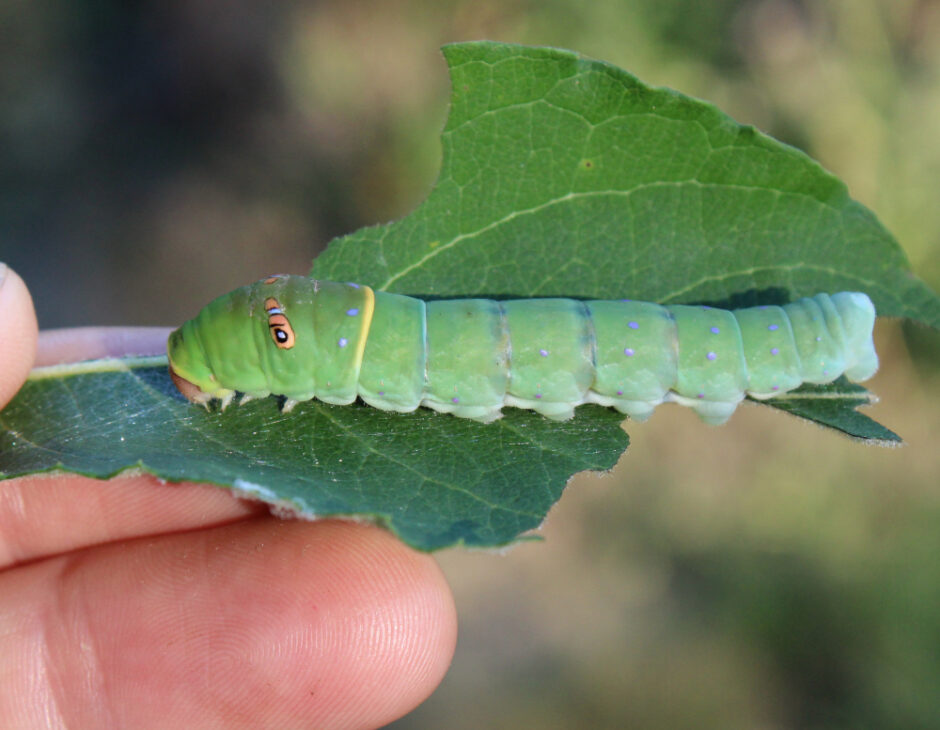
I didn’t have the heart to let my first babies be sacrificial victims, so I took the eggs inside, and I raised the caterpillars on willow leaves. They went into chrysalis in August, but they didn’t emerge in the fall, so I stuck them in the fridge for the winter. In May, I took them out, and a few weeks later, they all emerged.
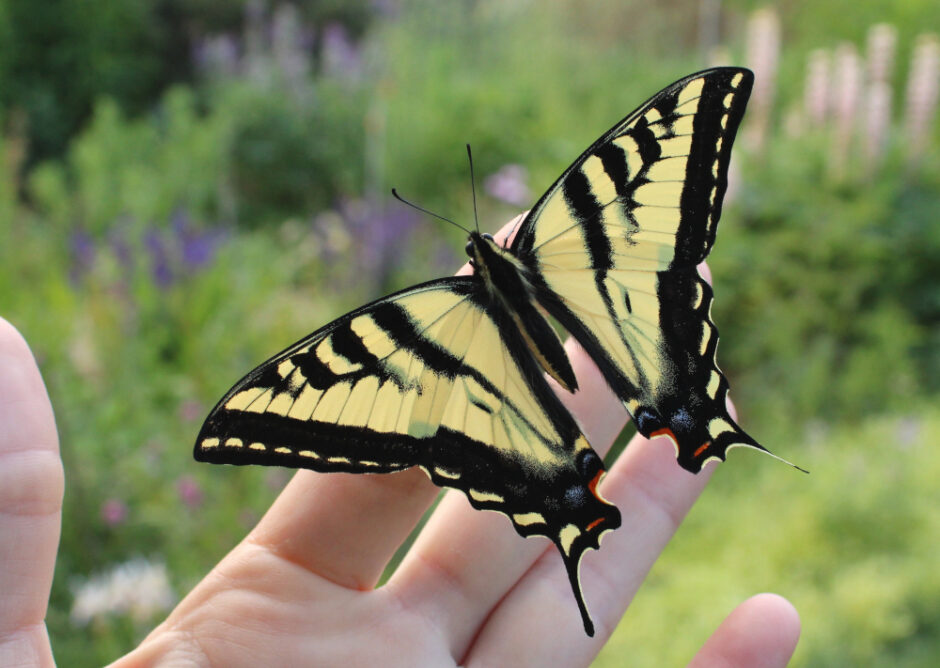
They were perfect.
According to Merrill Peterson’s outstanding field guide, Pacific Northwest Insects, moth species outnumber butterflies by about ten to one in our area. They do the heavy lifting when it comes to supporting food webs. I’d hoped to find some of the many moth species that feed on willow here, such as the polyphemus moth, the lunate zale, the western eyed sphinx, or the large gray dagger. Alas, nothing so far.
Perhaps the moths need a little more time to find my tree, or perhaps they’ve already found it. I once heard Doug Tallamy address this question after one of his talks.
An attendee said she had planted a native keystone tree in her yard and asked, “Why can’t I find any caterpillars on it?”
Tallamy replied, “Because the birds are better at it than you.”
Here’s hoping the birds are better at it than me, too. After all, if they have to collect hundreds of caterpillars every day to raise their offspring, they’d better be pretty good at it!

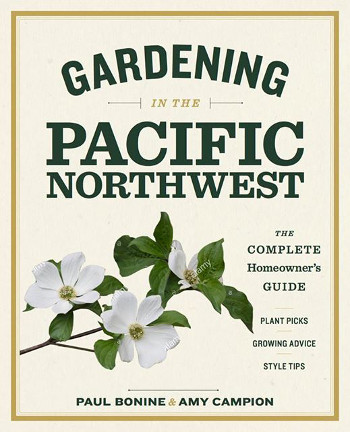
Hello Amy! This is Ethan Boger from Cincinnati now living in Israel. I love reading your posts from time to time. How are you??? Believe it or not I am now a part time “gardener” if growing plants in large pots on a 3×4 meter porch counts…Anyway, I planted a dwarf lemon tree 3 years or so ago. For most of that time it was doing great. Then, a few months ago, I began to notice that the stray cat we’ve been feeding was peeing in the pot. Then the tree started losing its leaves and is now leafless. I tried washing out the soil by multiple overwatering but so far no luck. Any suggestions?
Hi Ethan,
So nice to hear from you! I hope you’re doing well. I’m not sure what more you can do for your lemon tree. Maybe repot it with some fresh soil?
Will a Curly Willow support caterpillars?
It’s hard to say how many species a curly willow would support where it isn’t native. I doubt anyone has ever studied it. I would guess it would support some species, but most likely not nearly as many as a native one.
Only the species local to your area will support the high numbers of species cited in that National Wildlife Foundation data. Doug Tallamy, who Amy also cites here, has done extensive research on this subject. In one study comparing exotic and native plants in the same genus – Sugar Maple vs Norway Maple (he lives and does research in the eastern US) – they found that the exotic Norway Maple hosted only a tiny fraction of the number of caterpillars found on Sugar Maple.
Curly Willow is native to east Asia, same as Weeping Willow. Beautiful plants, but they’re not gonna support our wildlife like plants which evolved alongside those animals in ecosystems here over tens of thousands or millions of years.
Good to see you writing!
Nice to hear from you, Paul! I do need to do some more writing. I have been speaking more about gardening for insects, and that’s been fun.
Hi Amy,
I am contacting you re: the possibility of giving an in-person talk to our horticultural group located in Bellingham, WA.
Please let me know the best way to reach you.
Thank you!
Dawn
[…] © The World’s Best Gardening Blog […]
I think I just found my next tree! Now to figure out where to purchase one?
Thank you for this article!
Thanks for reading!
Hi Amy, just came across this post when I was researching Scoulers for planting this fall in my yard near Seattle. What companion shrubs do you recommend with it in a drier, upland, full sun setting? My yard is a blank slate and I’d like to include some friends for my future willows! Thank you!
Hi Kim, I have Spiraea lucida under mine, and I love that plant. Unfortunately, there aren’t many native shrubs that don’t get pretty huge. I would suggest perennials to go around your tree, such as pearly everlasting, goldenrod, lupines, and asters.